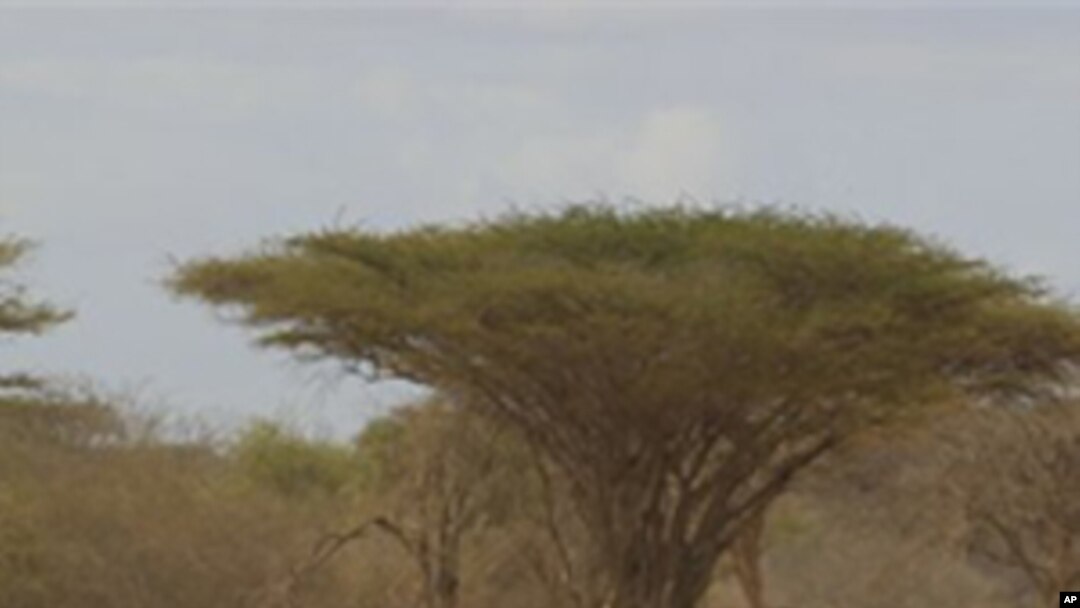Experts say the Pacific ocean phenomenon known as La Niña is partly to blame for the drought ravaging the Horn of Africa.
But while the latest La Niña episode has ended, climate scientists are concerned about what the next few months will bring and the intensifying effects of a changing global climate.
La Niña begins when eastern Pacific waters near the equator turn cooler than normal. A cascade of changes in ocean temperatures and wind currents follows, and the consequences are global.
Droughts and floods
The latest episode began in July of last year.
In the United States, altered winds pushed moisture away from the south, causing severe droughts that persist today, and toward the north, causing floods.
Half the world away, flooding in Australia this winter was also linked to La Niña, experts say.
And in Africa, "The easterly winds that are supposed to bring moisture into East Africa [were] reduced," says meteorologist Wassila Thiaw, head of the Africa desk at the U.S. National Weather Service's Climate Prediction Center. "There was less moisture coming into East Africa and therefore rainfall is reduced."
Rains that were supposed to fall over Somalia, southern Ethiopia and northern Kenya late last year failed.
Lost rainy season
The second rainy season in that part of the Horn of Africa, from March through May, failed, too, but for different reasons, he says.
"What played out here during the March-April-May season, we don't think that is really La Niña, but it probably mostly due to the atmospheric conditions that prevailed at that time."
He says La Niña's influence on the March-through-May rainy season typically is not as strong as on the October-through-December season. Natural variations in atmospheric conditions were enough to prolong the drought, he says.
Rainy season threatened
This La Niña episode ended in May. But Thiaw says there is a chance another one may begin by the end of this year.
"If that happens before the October-through-December rainfall season, then there's a high chance for us to be in another dryer-than- normal season," he says
That could be catastrophic for drought-stricken parts of East Africa, he says. But he cautions it is too soon to say whether it will happen, or how severe it would be.
Climate change?
La Niña and the related phenomenon called El Niño are natural cycles that happen every 3 to 5 years or so. Man-made contributions to global warming - auto and industrial greenhouse-gas emissions, for example -- are a concern, too. But climate scientist Simon Mason at Columbia University's International Research Institute for Climate and Society says the human factor in the Horn’s climate woes is less clear.
"East Africa is one of our big perplexing areas for the moment," Mason says.
Several groups around the world have developed computer models to predict how increasing greenhouse gases will change the climate.
"Most of the models are actually suggesting that East Africa will become wetter," Mason says. "However, if we look at what's been happening in East Africa at least for the last decade or so, it's actually been getting quite a lot drier."
Mason says that drying trend is at least partly due to global warming, which is contributing to rising temperatures in the Indian Ocean. That creates conditions that draw moisture away from East Africa.
'Need to do a bit of work'
However, current computer models do not capture this effect very well, Mason says. "So we need to do a bit of work there to work out what our models are possibly doing wrong."
Others question whether climate change is responsible for the trend. The National Weather Service's Wassila Thiaw says temperatures are rising in the region, but attributing this drought to climate change is difficult because there is so much natural variability in the weather patterns.
But experts say in terms of food production, it does not make that much difference whether it gets wetter or drier because it is sure to get hotter. They may not be sure about rainfall, but they are confident temperatures in East Africa will continue to go up.
Thirstier crops
Hotter weather means thirstier crops, according to agriculture economist Claudia Ringler at the International Food Policy Research Institute.
"So you actually need more water to get the same out of the crop at a higher temperature," she says.
Ringler notes that much of the land in drought-stricken East Africa is not very productive in the best of times. And, she adds, "it will not get any better. Even if we have a bit more rainfall, the general potential for food production in the region is not expected to improve dramatically in the region."
Furthermore, when the rain falls is in some ways as important as how much. Climate change tends to promote more heavy downpours with longer dry stretches in between. That is not good for raising crops, either, she says.
So Ringer adds that farmers and herders in East Africa need help becoming more resilient in the face of looming climate changes, whatever they turn out to be.


